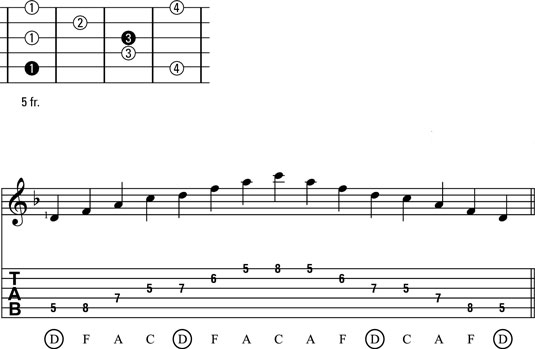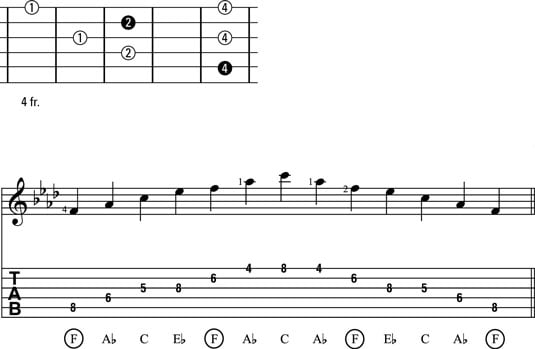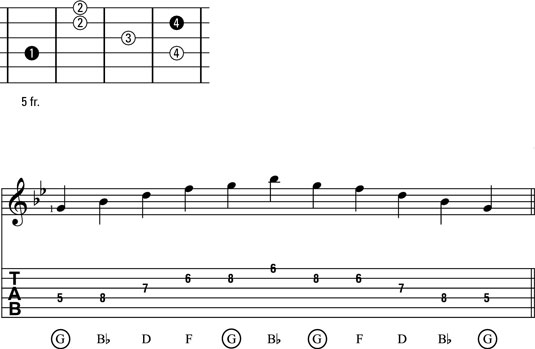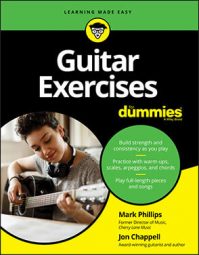Minor seventh chords can be derived in different ways, but one way is to start with a major scale and play 1, b3, 5, b7. So in the key of C, a Cm7 (C minor seven) chord is spelled C, Eb, G, Bb.
Minor seventh chord arpeggio patterns #3, #4, and #5 span a bit less than two octaves. So you have fewer notes with which to illustrate a minor seventh idea. You can fill the space by repeating notes (by double striking them), switching directions more often, or repeating groups of notes.
Minor seventh arpeggio pattern #3
What follows is the neck diagram and corresponding music and tab for minor seventh chord arpeggio pattern #3, in 5th position in the key of D minor. This is one of the easier ones because it contains no out-of-position notes (which means no stretching!) and it doesn't have any alternate fingerings. It just lies perfectly under your fingers.
Click here to download and print this arpeggio pattern.
Here’s an exercise in the key of F# minor in 9th position. Even though you don’t have to turn your 1st finger into a barre to play this exercise, try it anyway and see how you can create a sustained, harp-like sound by letting the strings ring as long as possible.

Minor seventh arpeggio pattern #4
Minor seventh arpeggio pattern #4, shown here in F minor, includes an out-of-position note on the 1st string. Because this note occurs one fret below (lower on the neck) where the finger naturally falls, you must stretch down with your 1st finger to reach it.The downward stretch is less common in out-of-position playing than the upward stretch, so try isolating just the stretch by playing the top three notes of the pattern starting from the 2nd string. Practice this three-note segment up and down before playing through the entire pattern.

Click here to download and print this arpeggio pattern.
The following exercise, in the key of E minor in 4th position, is a good stretching workout between your 2nd and 1st fingers. Leave your 2nd finger on the 2nd string (and let the string ring out) as you play the 1st string notes. This technique really tugs apart those 1st and 2nd fingers and is good for getting limber in a hurry!

Minor seventh arpeggio pattern #5
The following neck diagram, music, and tab for minor seventh chord arpeggio pattern #5 is in the key of G minor. This pattern emphasizes the 2nd, 3rd, and 4th fingers, which are traditionally a weaker set than the 1st, 2nd, and 3rd fingers. Practice pattern #5 after you’ve been playing a lot of barre chords (which give the 1st finger a workout), and isolate the move between the 4th and 2nd fingers on the top two strings if this motion feels less familiar or comfortable than other combinations of fingers.
Click here to download and print this arpeggio pattern.
Check out the following exercise in the key of Bb minor in 8th position. Notice that an eighth rest ends the measure. This rest may leave you feeling that the exercise ended a bit short. If you fill in that eighth rest with a played note, you can create a repeatable loop that allows you to easily practice the pattern over and over. Simply re-play the note before the last one — the 11th fret on the 4th string — and loop the pattern.


